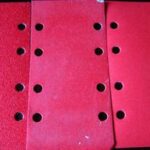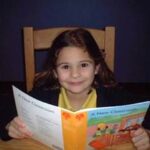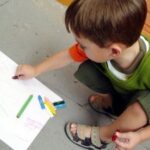Whether you’re looking for secular or faith-based, structured or free-style, you need a homeschool curriculum that’s chock full of everything your kid needs to know at their particular age and grade level. The good news is that great homeschool curricula do exist. The bad news is that the cost of a good prepackaged curriculum can be scary. Don’t let a high-priced homeschooling curriculum deter you from schooling your child from home – design your own homeschool curriculum instead!
Why should I design my own homeschool curriculum?
Designing your own homeschool curriculum might sound like a huge undertaking, but consider the benefits of a curriculum you design over one that you buy prepackaged:
– Designing your own curriculum is free.
– You can tailor your learning approach to your child’s skills and abilities.
– Your child learns what you think is important for them to learn – not what someone else thinks.
– Your child can learn about subjects not normally taught in traditional schools or other homeschool curricula.
– You can incorporate topics your child would like to learn into your homemade homeschool curriculum.
– If your homeschool curriculum doesn’t work for your child, you haven’t wasted money.
How do I know what my kid needs to learn?
Sure, you’re saying. Sounds great. But each grade level has it’s own standards of learning and things that every kid needs to know. How am I supposed to know if my homemade homeschool curriculum is covering everything?
If you want to make sure you haven’t missed anything that other kids learn when they’re your child’s age, would like your child to stay current with his public school in case homeschooling doesn’t work out, or just want a blueprint to start designing your homeschool curriculum from, there are resources available to you. Here are a few to get you started:
– Worldbook, Scholastic, and About.com each provide a great section on their website that shows typical courses of study based on age group. You can use their site as a foundation to design your homeschool curriculum,.
– Web sites like FamilyEducation.com and GreatSchools.org provide standard information on what every child should know before they leave Kindergarten through 12th Grade. Just Google “What does my (first grader, second grader, etc.) need to know?” to find out more.
– Many public or private schools will provide you with a printed curriculum of what they teach, sometimes for free and sometimes for a small fee. Contact your local school to find out their policy.
Six Steps to Creating a Homemade Homeschooling Curriculum
Now that you’re armed with resources, it’s time to sit down and get to work. To get started, you’ll need:
Three-ring binder
Hole-punched, lined paper
Printout of your local school’s curriculum, a copy of the Worldbook or Scholastic typical course of study, etc. (something to get you started)
Large desk calendar, or piece of poster board you can draw one on
1. First, you’ll need to pin down your child’s learning style.
Can he listen to stories endlessly, over and over? Would she prefer to be outside, kicking a ball around? There are several different learning styles, and by knowing the way your child learns best, you can come up with a tailored program to fit their needs. To learn more about the different learning styles, check out this article.
2. Get out several pieces of paper.
At the top of each piece of paper, write a subject. For example, Reading, Listening and Communication, Math, Social Studies, Science, Physical Education and Health, Art, etc.
3. Next, take a look at your sample course of study and see what is listed under each subject.
For example, let’s say you have a first grader. Recommended learning points for first graders under Reading on the Scholastic “What to Expect in 1st Grade” page are:
– Expand sight word vocabulary
– Recall the sequence of events in oral and written stories
– Discuss story elements such as plot, character, events, and setting
– Understand basic punctuation (capitalize first letter of a sentence, use periods and question marks, etc.)
– Identify the main idea and details in a story
– Print legibly
– Recognize single and plural forms of nouns
– Write in complete sentences
– Differentiate between fiction and nonfiction stories
– Memorize and correctly spell between 130-150 words
Copy those down. Then add anything else you’d like your child to learn, such as:
– Gain familiarity with different types of kid-friendly literature, such as poetry, fairy tales, and fables
– Develop an interest in reading with age-appropriate stories
4. Now, on a separate piece of paper, brainstorm ways to help your child tackle each learning point, taking into account their individual learning style.
Try to integrate outdoor activies or field trips, movies, audiobooks, fiction books and art projects, just to keep things fun and interesting.
Some example activities you could include are (again, for our example of first grade reading):
Reading short stories, such as “The Three Billy Goat’s Gruff” and acting it out. (Great for an active, or kinesthetic learner.)
Take a trip to the library to get your child a library card if they don’t have one. Have your child ask the
librarian for book recommendations for their age group. (Helps your child develop social skills.)
Try reading aloud some popular fiction, like the popular Junie B. Jones or Captain Underpants books. (Develops a love of reading as entertainment.)
Have your child draw a picture or comment and write a sentence about it beneath.(Fun for artistic kids.)
Start a journal and give your child fun daily writing prompts. Don’t worry about spelling yet.(Familiarizes your child with the act of writing.)
Find free printable handwriting worksheets (or make your own here) to practice on daily.(Try a reward system to keep your child engaged, like five great worksheets equals her choice of board game.)
Glue beans to a sheet of cardboard in the shape of each letter. (Excellent for tactile learners who love to experience things in a hands-on way.)
Create flashcards with common first-grade sight words, like these. (Visual learners do well with activities like this.)
As you go, jot down resources for some of your learning objectives, such as printables websites, books that you want to check out from the library, field trip ideas, or movies you think would complement what your child is studying. Then you’ll have these items in your binder and hopefully save time by not scrambling for ideas later on.
5. Once you’ve gone through each learning point, you can start working on a schedule. Using your desk calendar, decide what you want to work on each day. Start slow, so neither you or your child get overwhelmed, and don’t try to cram too much into each day. Here’s a sample first grader’s homeschooling day for you:
Monday
Reading
Start a journal. Today’s writing prompt: Finish the sentence, “I’d like to see _________.”
Read a chapter of “Ricky Ricotta’s Mighty Robot Vs. the Jurassic Jackrabbits From Jupiter.”
Complete handwriting worksheet.
Math
Complete pattern worksheet.
Practice basic addition with macaroni noodles.
Science
Take a walk around the block and talk about seasons.
Social Studies
Find Australia on a map or globe.
Go online and listen to aboriginal music from Australia.
Health and Physical Fitness
Play for a half-hour on the Wii Fit.
Prepare a healthy snack together.
It may not be quick and easy, but by developing your own homeschooling curriculum, you can create a flexible learning structure that can be stretched, tweaked or changed to accommodate your child’s personality, skills and abilities. And the fact that you’ll save a ton of money doesn’t hurt either!





